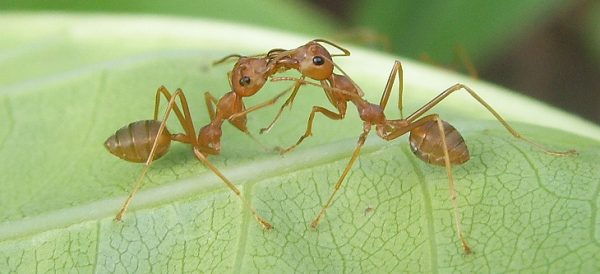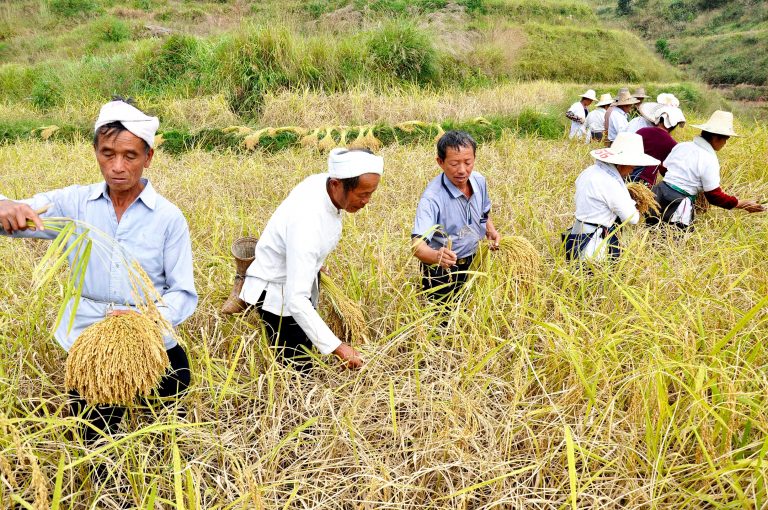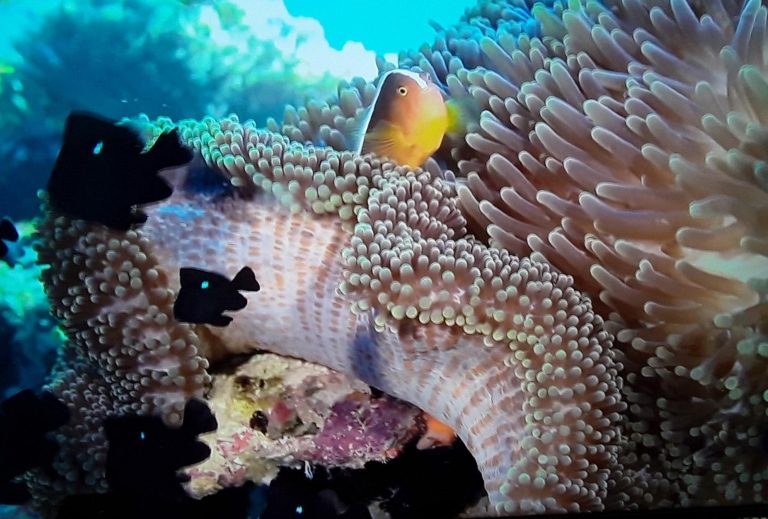Pesticides are bad; we all agree on that, but we also want to eat and not pay too much for our food. Pesticides increase the yield of our crops and, at present, are essential to maintain our food supply. What to do? Today scientists are searching for biological replacements for pesticides. But 1,700 years ago Chinese farmers were using an organic, non-chemical, nonpolluting, automatically recycling, biological pest control agents — ants! (Ironically, today China uses far more chemical pesticides than any other country.)
To protect their trees, Chinese growers transferred colonies of weaver ants (scientific name, Oecophylla smaragdina) from the wild to their commercial orchards. This practice was first recorded in a textbook of botany, Plants of the Southern Regions written by Ji Han around 304 A.D. He called them citrus ants. Even then there were middlemen: some entrepreneurs collected the nests from the forests and sold them to the farmers.
Weaver ants are astounding creatures. They live up in trees where they make themselves capacious nests from leaves. There might be a hundred nests each containing thousands of ants.
To make a new nest, worker ants search for suitable leaves. Once chosen, a worker stands on the edge of the leaf, rears up, grabs an adjacent leaf in its mandibles, and pulls it down to meet the first leaf. Other workers join in, forming a line of ants drawing the leaves together. If the gap between the leaves is too great for the reach of one ant, another ant will climb onto its back to reach further. If necessary, a ladder of ants will form to span the gap, the mandibles of one grasping the waist of the other.

Once the leaf edges are brought together, other ants gently carry over a larva from the old nest. Weaver ant larvae, like silkworms (another insect China is known for), can produce silk from their salivary glands. A tap on the head of the larva induces it to produce a strong, sticky, silk thread. The larva is carried along the leaf edges so that the silk seals them together, just like using a glue gun! Hence the name, weaver ants.
Success
You are now signed up for our newsletter
Success
Check your email to complete sign up
Once in its secure home, the new colony gets to work. The queen lays eggs which develop into larvae then pupae. From the pupae emerge workers. The larger workers leave the nest to forage for food. The foraging ants are very territorial and aggressive predators: they attack and kill other insects, bringing the corpses back to the nest as food. Doing so, the weaver ants clear the area around the host tree of other insects which might otherwise harm the tree. The smaller ants tend to stay closer to home looking after the larvae and gathering honeydew excreted by nearby bugs.
The early Chinese must have noticed that colonies of weaver ants benefited the host trees. When they themselves grew citrus and mango trees they introduced weaver ant nests to their orchards. The practice spread to other countries in Southeast Asia, where it is still being used today.
Modern scientific observations have confirmed that trees with weaver ant produce more and better quality fruit and have less leaf damage from pests.
Of course, there is always a fly in the ointment! Weaver ants get some of their nutrition from the honeydew excreted by bugs, which feed on the juicy sap of the host tree, like the aphids we know so well from our own rosebushes. Nevertheless, on balance, the presence of the weaver ant colonies is beneficial to the fruit tree.
But that’s not all!
Weaver ants especially the larvae are high in protein and fatty acids and are eaten by humans. Indeed, in Thailand they are considered such a delicacy that the larvae cost more per pound than beef! The ants are harvested by making a hole in the nest and letting the insects fall into a pot. A brunch is put into the pot allowing the workers to escape leaving the larvae to be eaten. The ant eggs are used as a condiment.
In Indonesia, rich people keep songbirds in cages. The birds are spoiled by being fed expensive weaver ant larvae.
Weaver ants also have a role in Traditional Chinese Medicine. It is believed that weaver ants can prevent rheumatism. In India, ants are dipped into oils which are spread on the skin to cure rheumatism, gout and skin diseases. Of course, weaver ants are rumored to be aphrodisiac.
The weaver ants of China are one of the few proven alternatives to chemical pesticides. Among the 30 million species of insects out there, there must be others to be discovered and used to replace pesticides.
Anthony Woodward is a retired orthopedic surgeon.















